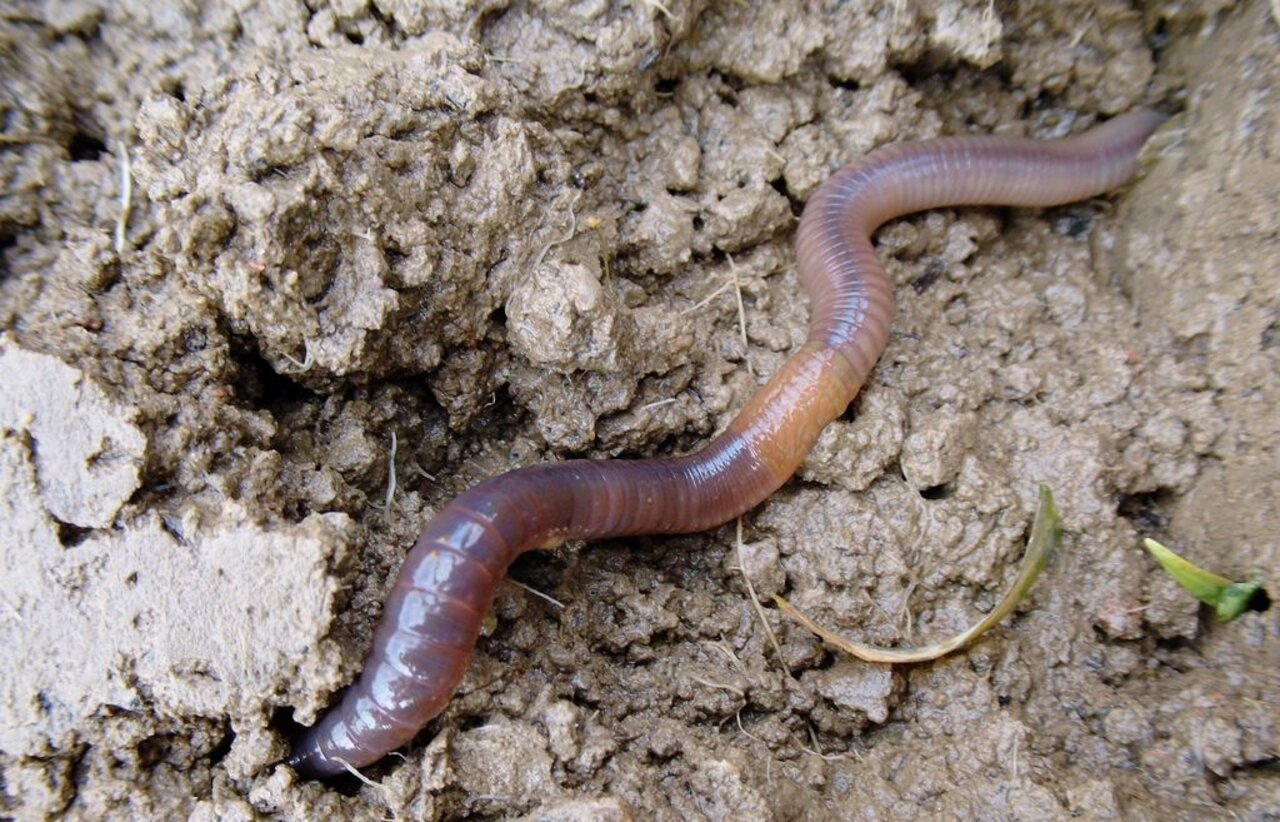Project
Reduced tillage for soil life

Occasionally reduced tillage in organic farming and effect on earthworms, springtails (collembolans) and crop yields
Healthy soils are characterised by high biological diversity. We are investigating the influence of temporarily reduced tillage in organic farming on earthworms, springtails and yields.
Background and Objective
Earthworms are of considerable importance for litter decomposition in soils and positively influence soil structure. They have yearly cycles of activity and feed on organic litter from the soil surface which they mix with mineral soil components. Through deep ploughing especially deep burrowing species are killed and their burrows are destroyed. Springtails are present in soils in very high numbers. as omnivorous animals they are part of many decomposing processes. Activity and abundance of these soil organisms are determined by the feed offer. This is influenced by crop rotations and soil tillage management. In Organic farming a targeted improvement of these decomposing soil organisms is of special importance to reach high nutrient mobilisation. Effects of occasional reduced tillage on activity and biodiversity of earthworms and springtails are analysed. Additionally effects of changes in crop rotations and of changes from conventional to organic farming on springtail populations in soils are explored.
Approach
Comparing field trials on occasional reduced tillage (max. 15 cm cultivation depth) and ploughing regime are established on the research farm of the Institute of Organic Farming. Culture crops are triticale and following clover grass. Earthworms, springtails and crop yields are determined. The organisms are identified to family and species level (springtails) or species level (earthworms). Additionally after a first study in 2004 springtail populations in soils of different farm management regimes (organic dairy farm, cash crop farm, conventional site) are determined in the Trenthorst long term monitoring trial in 2012.
Results
I
Occasional reduced tillage (ORT) positively influenced earthworm performance already in the short-term. The short-term positive response of earthworm performance against reduced tillage could be underpinned for organic arable farming in general. A meta-analysis showed that reducing the tillage intensity positively influenced earthworm abundance and biomass.
Collembolan species richness and abundance could not be used to distinguish different management practices. In terms of the species composition it turned out that it differed between conventional and reduced tillage but aligned under the different practices within half a year. The share of euedaphic collembolan individuals showed some potential to discriminate between different management practices. Their proportion increased when habitat conditions started to stabilize. Stable habitat conditions refer to constant resource availability, constant soil moisture conditions and the absence of soil disturbance. Community composition of collembolans however reacted to different crop classes and interannual variations in soil conditions. Soil acidity and soil moisture were the factors causing differentiation in the composition of collembolan species.
Overall counting of earthworm surface casts turned out as an easy-to-use indicator for abundance and biomass of anecic earthworms, especially L. terrestris. Concerning collembolans no indicator which can be used as easy as this could be revealed. Nevertheless, collembolan life-form traits showed some potential in differentiating management practices and are at the same time relatively easy determinable.
Thünen-Contact

Involved Thünen-Partners
Duration
3.2012 - 12.2017
More Information
Project status:
finished
Publications
- 0
Phillips HRP, Bach EM, Bartz MLC, Bennett J, Beugnon R, Briones MJI, Brown G, Ferlian O, Gongalsky KB, Guerra CA, König-Ries B, Krebs J, Orgiazzi A, Ramirez KS, Russell DJ, Schwarz B, Wall DH, Brose U, Decaëns T, Moos JH, et al (2021) Global data on earthworm abundance, biomass, diversity and corresponding environmental properties. Sci Data 8:136, DOI:10.1038/s41597-021-00912-z
- 1
Moos JH, Schrader S, Paulsen HM (2020) Minor changes in collembolan communities under different organic crop rotations and tillage regimes. Landbauforsch J Sustainable Organic Agric Syst 70(2):113-128, DOI:10.3220/LBF1611932809000
- 2
Phillips HRP, Guerra CA, Bartz MLC, Briones MJI, Brown G, Crowther TW, Ferlian O, Gongalsky KB, van den Hoogen J, Krebs J, Orgiazzi A, Routh D, Schwarz B, Bach EM, Bennett J, Brose U, Decaens T, König-Ries B, Loreau M, Moos JH, et al (2019) Global distribution of earthworm diversity. Science 366(6464):480-485, DOI:10.1126/science.aax4851
- 3
Moos JH (2018) Further development of indicators for the assessment of soil biodiversity using the example of earthworms and springtails (Collembola) with particular reference to organic farming. Witzenhausen: Univ Kassel, Fachbereich ökologische Agrarwissenschaften, 96 p, Kassel, Univ, Fachbereich Ökologische Agrarwissenschaften Witzenhausen, Diss, 2017
- 4
Moos JH, Schrader S, Paulsen HM (2017) Kurzfristige Auswirkungen des Pflugverzichts auf Collembolen-Gemeinschaften des Bodens. In: Wolfrum S, Heuwinkel H, Reents HJ, Hülsbergen KJ (eds) Ökologischen Landbau weiterdenken - Verantwortung übernehmen, Vertrauen stärken : Beiträge zur 14. Wissenschaftstagung Ökologischer Landbau, Freising-Weihenstephan, 7. bis 10. März 2017. Berlin: Köster, pp 282-285
- 5
Moos JH, Schrader S, Paulsen HM (2017) Reduced tillage enhances earthworm abundance and biomass in organic farming: A meta-analysis. Landbauforsch Appl Agric Forestry Res 67(3-4):123-128, DOI:10.3220/LBF1512114926000
- 6
Moos JH, Schrader S, Paulsen HM, Rahmann G (2016) Occasional reduced tillage in organic farming can promote earthworm performance and resource efficiency. Appl Soil Ecol 103:22-30, DOI:10.1016/j.apsoil.2016.01.017
- 7
Moos JH, Paulsen HM, Schrader S, Rahmann G (2015) Ökologische und Ökonomische Auswirkungen des zeitweisen Pflugverzichts beim Anbau von Triticale und Kleegras. In: Häring AM, Hörning B, Hoffmann-Bahnsen R, Luley H (eds) Beiträge zur 13. Wissenschaftstagung Ökologischer Landbau "Am Mut hängt der Erfolg: Rückblicke und Ausblicke auf die ökologische Landbewirtschaftung". pp 90-93
- 8
Moos JH, Paulsen HM, Schrader S, Rahmann G (2014) Effects of temporarily reduced tillage in organic crop rotations on yield, earthworm biomass and development of weed pressure : First results of a case study from Schleswig-Holstein/Germany. Thünen Rep 20, Vol. 2:423-426
- 9
Moos JH, Schrader S, Paulsen HM, Rahmann G (2013) Earthworm casts as a monitoring tool to assess earthworm density in field. In: Building bridges in ecology : linking systems, scales and disciplines ; GfÖ 43rd Annual Meeting of the Ecological Society of Germany, Austria and Switzerland ; September 9 to 13, 2013, Potsdam, Germany ; book of abstracts. Göttingen: Gesellschaft für Ökologie, pp 63-64





